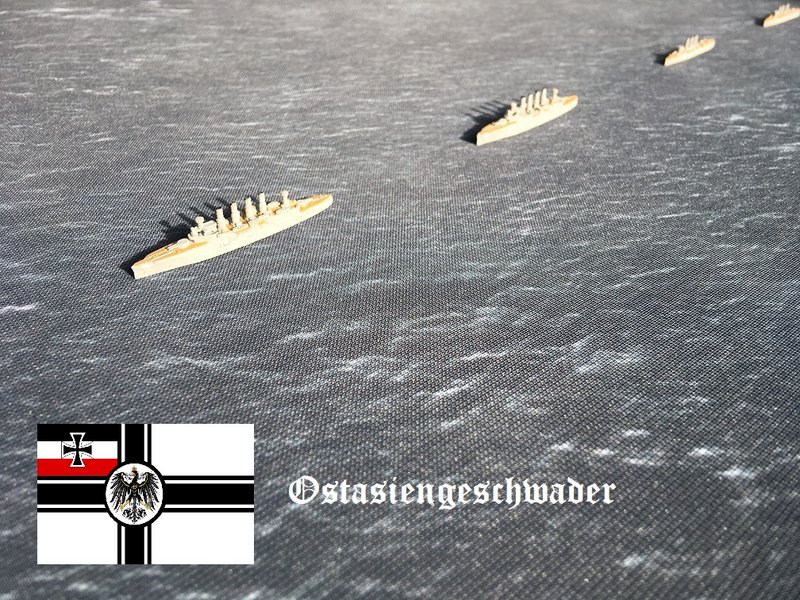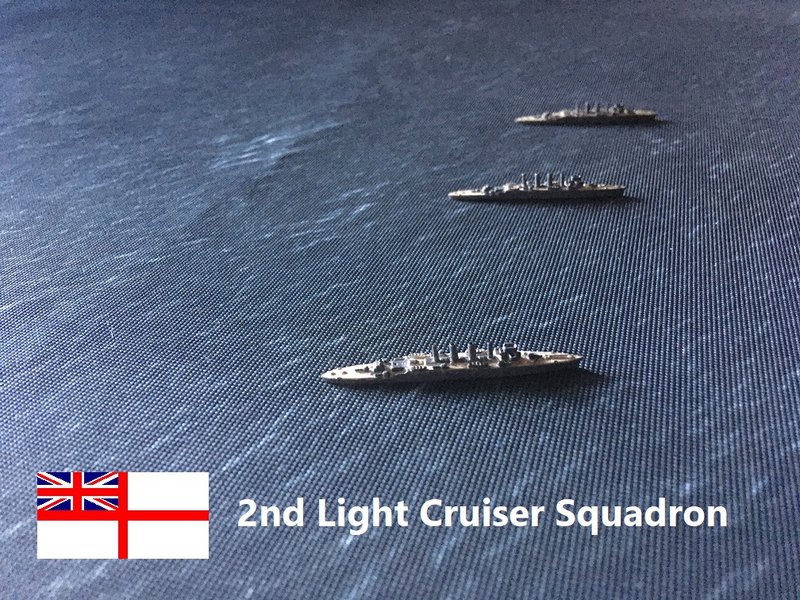Great question. I'm sorry I didn't see and reply to this sooner.
The short answer is that you can't go too far wrong with a middle grey of some sort.
A longer answer is that while most warships in the Great War had similar colour schemes, the colour of warships varied according to four things:
- The navy. Different navies chose and used different colours of paint, obviously enough. German capital ships were painted in a notably lighter grey than British ones. As Sakuragi pointed out, different dockyards sometimes used different shades of paint too.
- The size of the ship. Torpedo boats and destroyers were often painted in much darker colours, including black, to camouflage them at night. I believe submarines were painted differently too.
- The theatre. Ships serving closer to the equator, where there is more light, would often wear lighter greys than ships in more northern latitudes like the North Sea.
- Time. An individual ship's appearance can change over time, obviously. The Royal Navy changed how it painted its destroyers in about 1915 from dark grey to a mid grey. The Great War saw some of the first experiments in ship camouflage. The most obvious is the famous dazzle camouflage developed by the marine artist Norman Wilkinson which was particularly common on merchant ships. But there are photographs of the British battlecruisers Lion and Queen Mary in a simple hull block camouflage in 1915.
Black and white photographs are not a great help because light conditions and the type of film used can affect our perception of shade.
I find the following sources helpful:
ArticlesThere's a good article here by Mal Wright:
http://www.gwpda.org/naval/s1200000.htmContemporary ship modelsAlthough not infallible, shipbuilders' models are often a good guide to how a ship was painted when first built. I find these particularly helpful for details like the colours of decks and ship's boats.
Modern models can be useful too, though you risk repeating any mistake the model maker has made.
Contemporary marine artContemporary paintings, such as those by Norman Wilkinson, can provide a reasonable guide to colour shade -- though most ships were just grey.
In addition to the scale effect mentioned by Freddy, artificial light can completely distort colours. We also tend to look down on our miniature ships as if from a Zeppelin, so we see more of the deck and less of the hull sides. And, of course, beautifully painted miniatures can be ruined by a bright electric blue sea mat!

So I don't worry too much about the exact shade. I typically paint Royal Navy warships in Humbrol 27 ('Sea Grey') and German major warships in Humbrol 64 ('Light Grey').
Here are some of my 1/3000 German cruisers:

And some British ones:

I hope that helps.